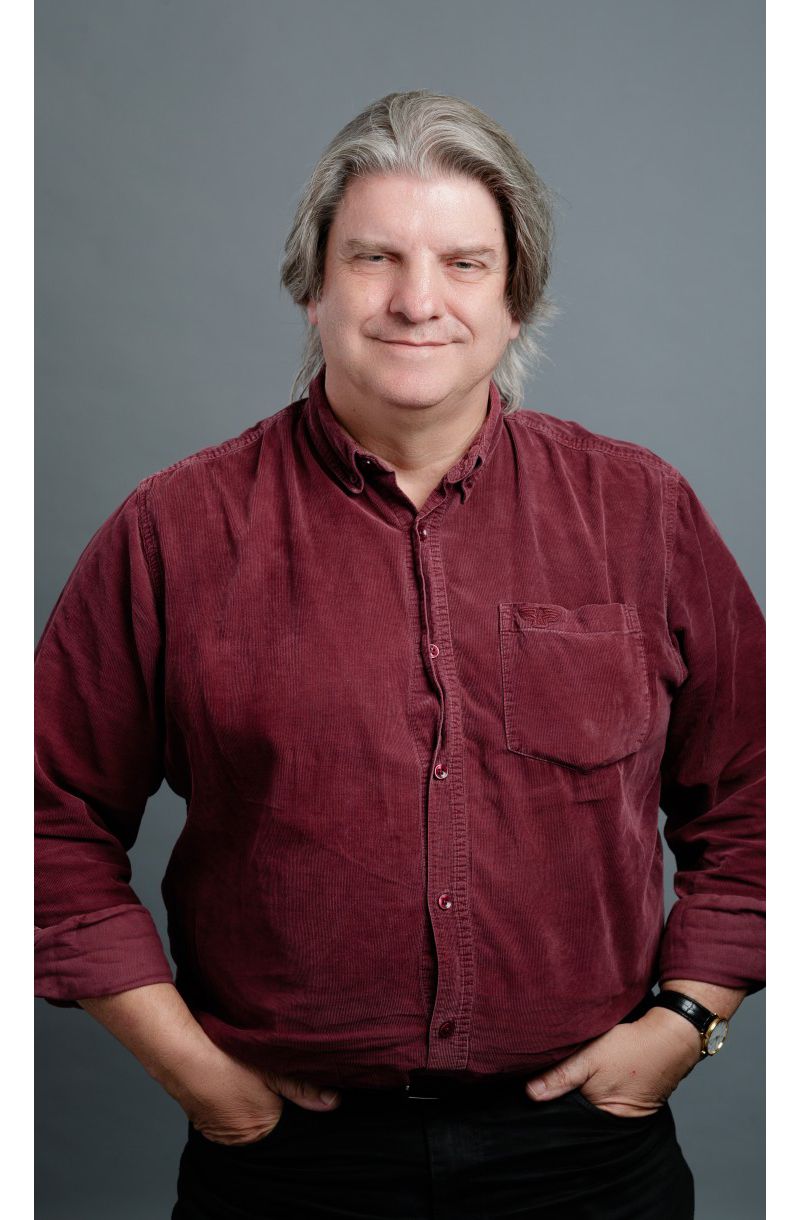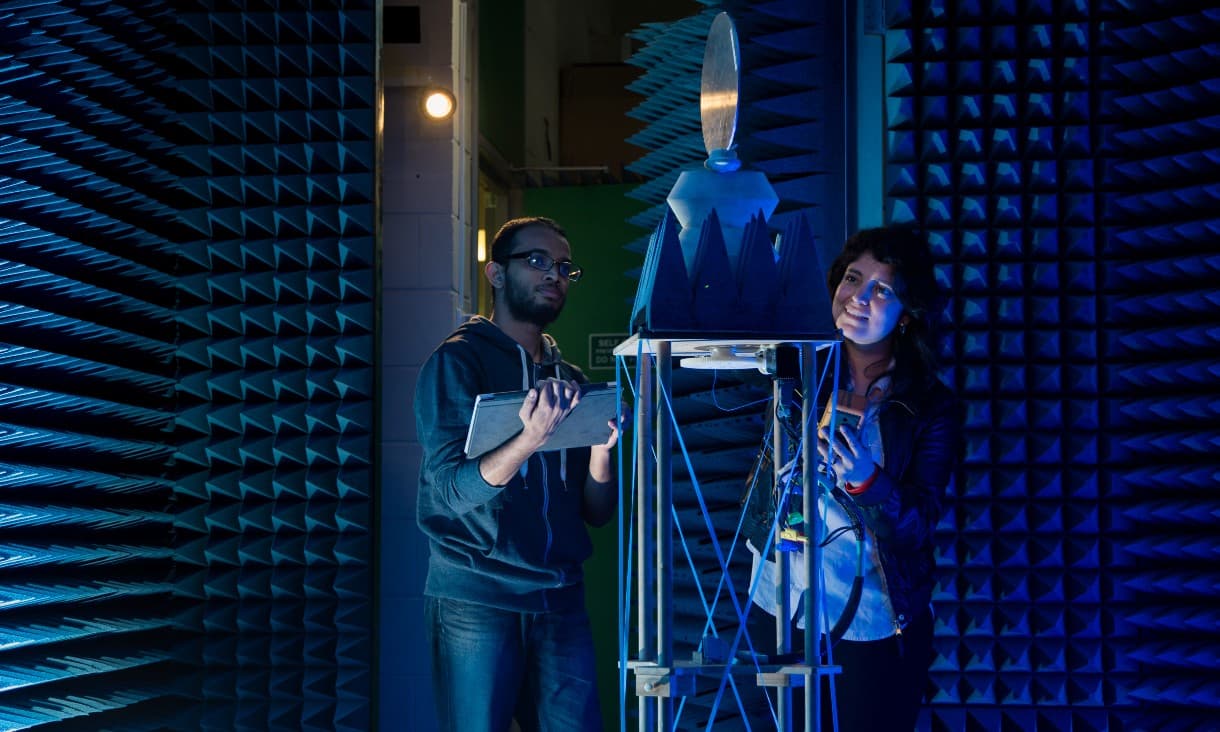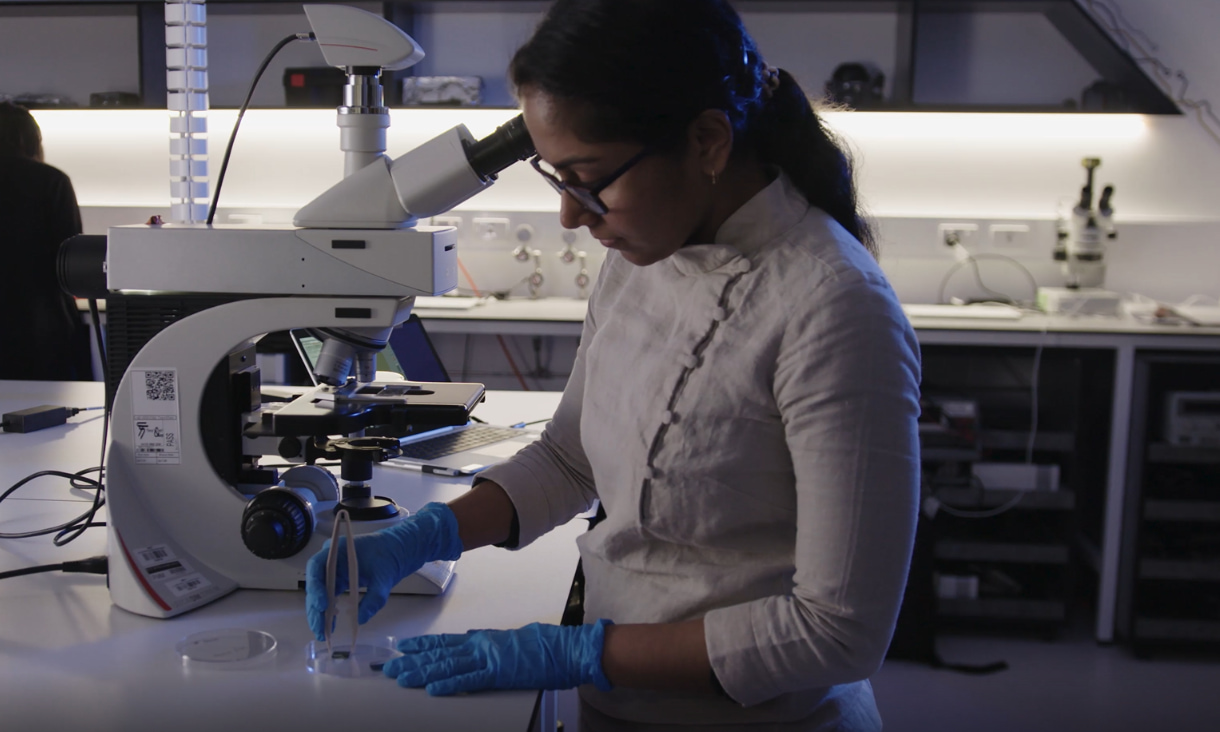VISUAL: RMIT University logo. A light box flickers on.
AUDIO: Hospital sounds.
DANIEL SPEAKS: I think engineering is about helping people in the real world.
AUDIO: Uplifting music
VISUAL: An x-ray of a spine is placed onto the light box. A doctor speaks to three students, Daniel, Marcela and Peter. who are sitting in a consulting room. They refer to various x-rays and have a model of a small robotic arm.
DANIEL SPEAKS: Our goal is to help children with limited mobility use technology in a new and exciting way.
VISUAL: Pan down Swanston Street, Melbourne with the State Library in the background, and trams. Daniel, Marcela and Peter cross the road in front of RMIT University City campus.
TEXT ON SCREEN: Engineering at RMIT. Making a Difference with Industry Projects.
PETER SPEAKS: We're a team of engineering students at RMIT, and we're working on a project to help children paralysed from the neck down by creating new technology.
VISUAL: In a consulting room, Peter sets up a laptop and web camera. There are a few children and an adult who he is scanning the facial expressions of through the web camera.
PETER SPEAKS: The aim is to create a connection between facial recognition and robotic arms. But first, we have to capture and learn all possible expressions.
VISUAL: In the Virtual Experiences Laboratory, a large laboratory covered with digital screens, Marcela is working on computer coding. She works on her laptop while inspecting the computer code, footage of the facial expressions and an image of a large robotic arm.
MARCELA SPEAKS: The challenge is translating all these facial movements into computer code. This way, we can communicate directly with the robotic arm.
VISUAL: In a laboratory, Daniel is working on an oscilloscope and soldering a computer mother board.
DANIEL SPEAKS: I always loved tinkering, and just making things, but this project is different. It's not just for an assignment, it's for a real client, for the real world. This could be life-changing technology.
VISUAL: Daniel, Marcela and Peter walk through the Advanced Manufacturing Precinct past 3D printers.
MARCELA SPEAKS: Building something completely new is about balancing imagination and practicality.
VISUAL: They meet with their lecturer to discuss their design and start a 3D printer. They take a completed 3D printed box out of the printer, and put the computer motherboard into the box
MARCELA SPEAKS: We are fortunate that at RMIT University we have amazing facilities and great guidance to make our project a reality.
VISUAL: The team meet with the Doctor in the Virtual Experience Laboratory and show him a large robotic arm. Sitting in front of the web camera, the doctor uses facial expressions to move the robotic arm and successfully pick up a cup and move it from one location to another.
DANIEL SPEAKS: As we continue to develop our project, it's important to share our progress each step of the way.
VISUAL: The Doctor is happy with the technology working and the team is excited by their accomplishment.
DANIEL SPEAKS: Engineering is about building something new. It's so rewarding to see how this technology can bring new possibilities into people's lives.
VISUAL: RMIT Logo. rmit.edu.au













